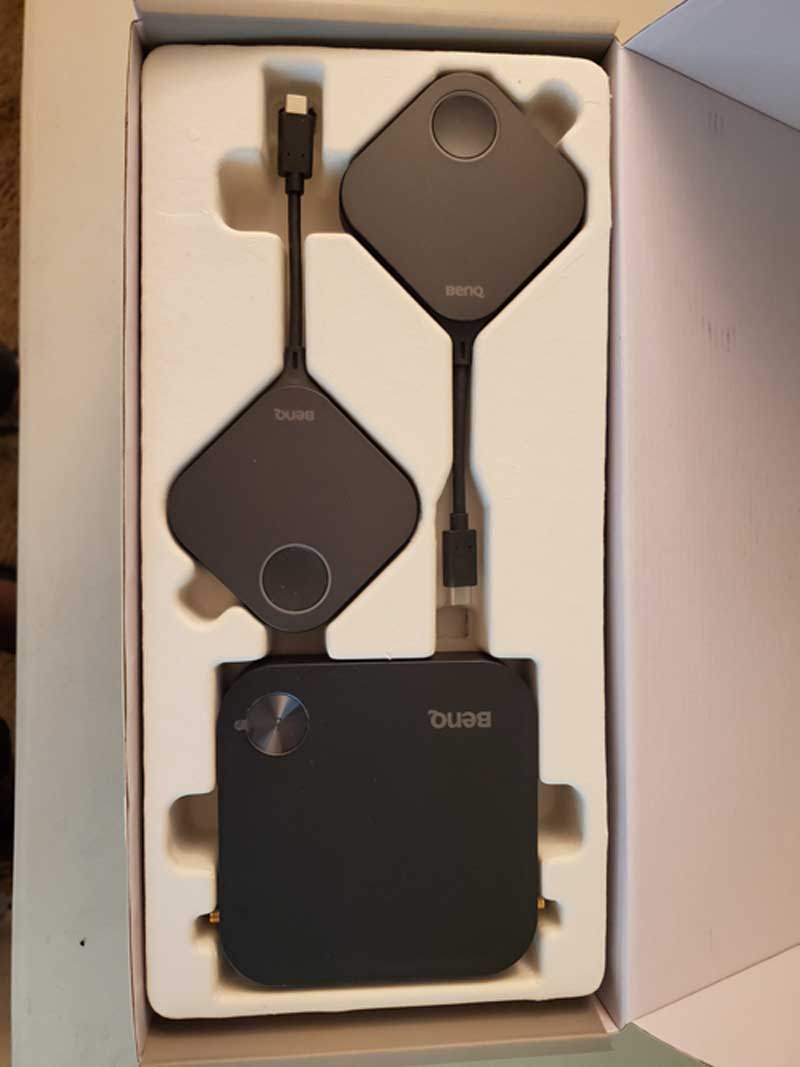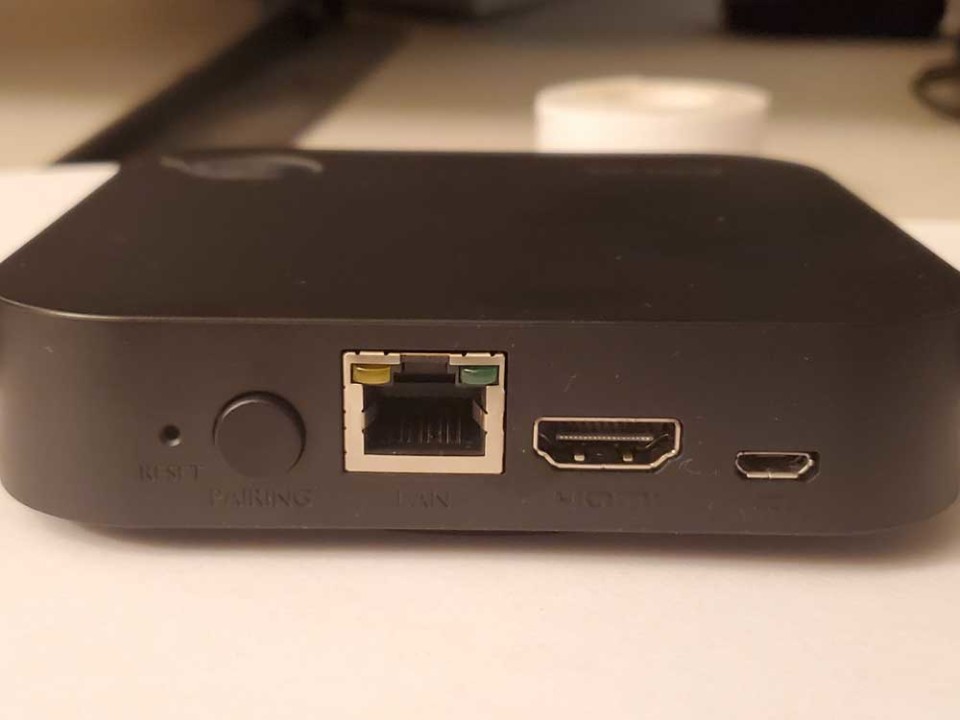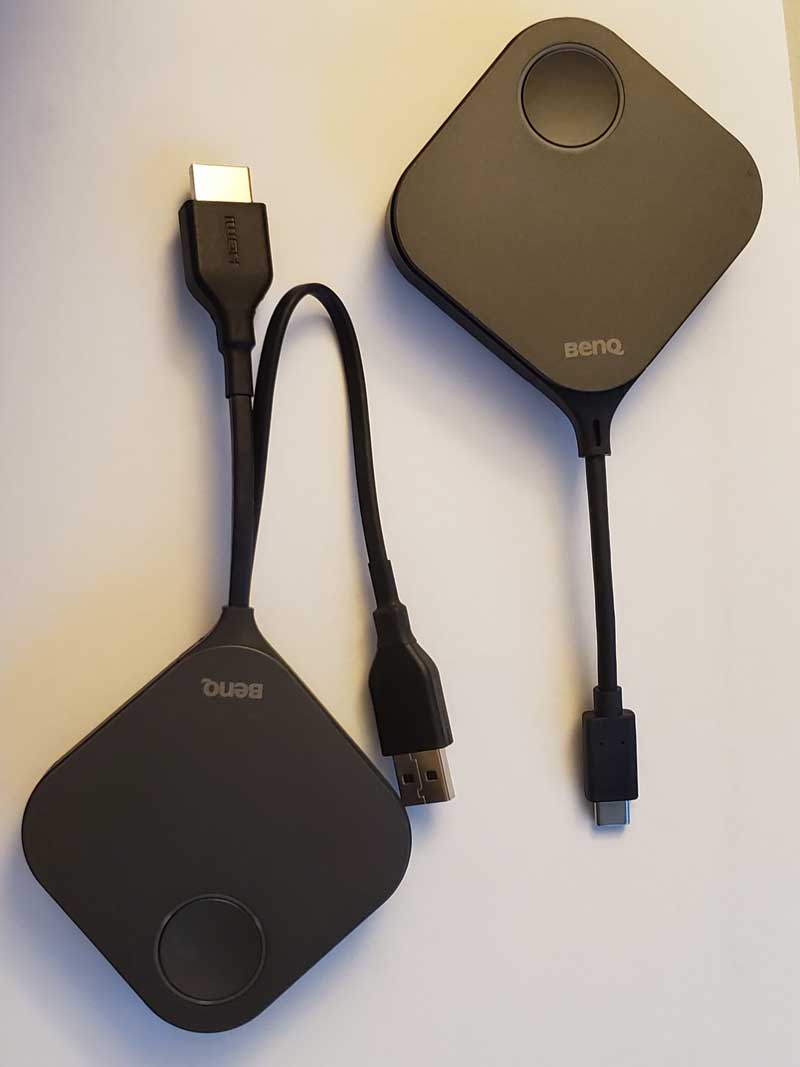The InstaShow Host has only a couple of connections. The HDMI output, Micro USB for power and an RJ45 if you want to hardwire it into the network.
The InstaShow system consists of a simple transmitter and receiver. The magic is in the engineering and performance BenQ has developed into the product. It truly is as simple as plugging the InstaShow host into your display and then plugging the Instashow button into your computer.
The WDC10 InstaShow button needs 2 connections, USB and HDMI, while the all-new WDC10C only needs 1, USBC and you are ready to go. Did I mention there was no software? The best feature of this product is there is nothing to install at all. No driver to load, no mirroring app to install absolutely nothing. All you need to do is push a button and you are presenting.
Not only is the BenQ Instashow about as easy as using a cable, but it is also about as secure as one too. The InstaShow system uses HDMI 1.4b with HDCP (High Definition Content Protection) to connect to your source. Then it transmits it completely encrypted using WPA2 with 128 bit AES encryption. You can't get any more private than that. BenQ has done a lot of testing and has provided a security whitepaper on their site if you would like more information.
Wireless presentation has had its ups and downs over the years, sometimes it becomes the star of your meeting as it drops frames and takes so long to refresh that there are awkward silences. Then you start to really hope that it's not going to disconnect. Many times, the meaning of your presentation can get lost in the poor performance of the device you may present with.
That is definitely not the case with the BenQ InstaShow. This is a great product. They are focused on SMB and Corporate huddle spaces and they sure have produced a nice system for those customers. Anyone who can plug in a cable and press a button can be a presenter in a matter of seconds.
























